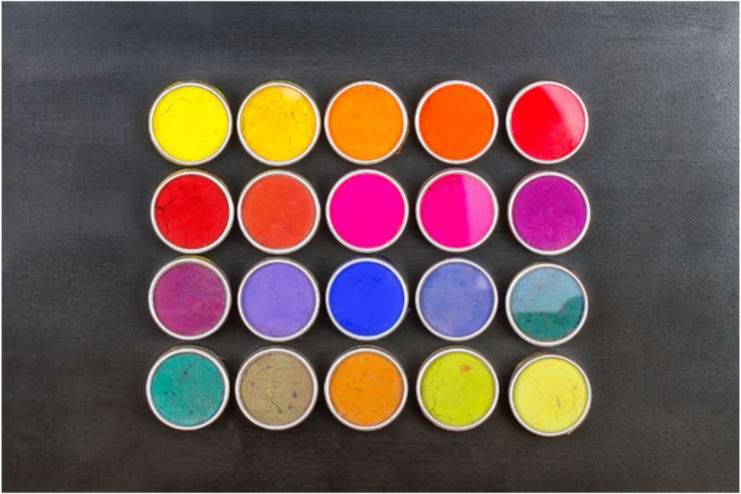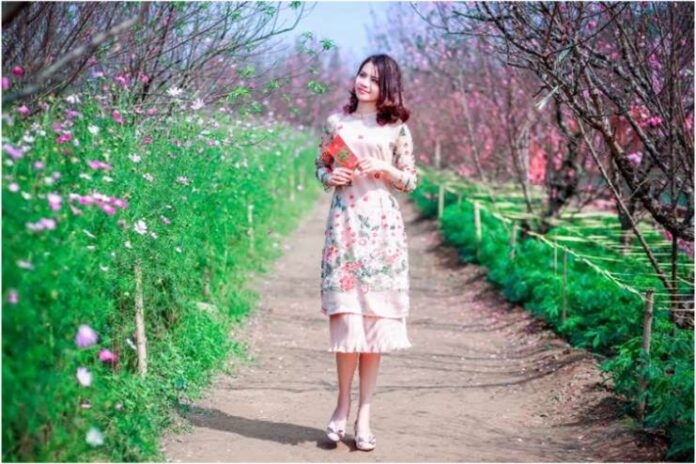Affiliate Disclaimer
Some links in this article are affiliate links. We may earn a small commission if you make a purchase through these links, at no extra cost to you. We only recommend products we find useful to our readersImagine strolling through a park and being completely engrossed in the hues surrounding you – the gentle pink of blossoming flowers, the golden warmth of the sun, and the rich greens of towering trees. Color Walk Therapy is a mindful activity that improves well-being by directing your attention to the colors in your environment.
Walking mindfully through space while concentrating on a specific color is known as a “color walk.” Focusing on colors is a creative activity that can enhance sensory sensitivity, cognitive stimulation, and mental well-being.
For generations, people have connected color with human psychology. Colors affect feelings and inspire creativity, from traditional healing methods to contemporary art therapy.
As stress levels rise, people are looking for natural ways to unwind. Color walks are becoming increasingly popular in health communities because they provide a revitalizing, screen-free mindfulness experience.
Read More: 19 Amazing Benefits of Morning Walk You Need to Know of
The Science Behind Colors and Their Psychological Impact

Color influences mood, suggests action, and can even affect physiological responses. Some studies suggest that specific colors can influence physiological reactions, such as heart rate or blood pressure, although these effects vary depending on individual perception and context.
Each shade of color emits its own wavelength and energy, which can influence our thoughts, feelings, and behaviors. According to color psychologists, individual factors such as personal experiences, cultural background, and mindset can all affect how we perceive and respond to color.
In chromotherapy (color therapy), color is sometimes used in treatments like light irradiation, acupuncture, and baths. The practice aims to restore balance and promote well-being, but it is generally considered a complementary or alternative approach.
Throughout history, various cultures have used color for healing and spiritual purposes. Ancient civilizations, including those in Egypt, China, and India, recognized the impact of color on both the mind and body. This deep connection to color has influenced spiritual practices, as well as wellness treatments, for thousands of years.
Red, orange, and yellow are warm colors, often associated with energy, warmth, and excitement, but also with aggression or discomfort in certain contexts. These hues can evoke a range of emotions, from feelings of comfort and enthusiasm to irritability and anger. Blue, purple, and green are cool colors, commonly linked to calmness and relaxation. However, they can also evoke feelings of sadness or detachment, depending on the context.
The study of color continues to capture people’s interest, and color psychology remains a relatively young field. As we gain a deeper understanding of color’s effects on behavior, it’s becoming increasingly clear why artists use color to evoke certain emotions and why color-based mindfulness techniques, such as Color Walk Therapy, are gaining popularity. These techniques use color to inspire mental clarity, enhance mood, and improve emotional well-being.
Read More: 13 Amazing Benefits Of Walking Barefoot For Promising Results
How to Practice a Color Walk

Color walk therapy is a straightforward yet effective technique for stimulating your senses, increasing mindfulness, and fostering creativity. Concentrating on colors while taking a stroll can teach your brain to be more aware of and grateful for your surroundings.
I have tried a variety of mindfulness and meditation techniques, but I have always struggled with how uninteresting it feels to sit on my couch with my eyes closed. On my first day of a color walk, I followed these steps:
- Preparation and Provisions: Before heading out on a walk, I made sure to pack a water bottle, wear comfortable clothing, and have any required safety equipment (such as a phone or GPS, reflective gear, etc.). I also checked my destination in advance to remain mindful of my surroundings, even when searching for colors.
- Pick my Color: How many times in nature could I discover the hue pink? That was my choice, and I assumed it would be a problem. As it happens, it’s far more common than one might imagine!
- Look Around: Then I saw that I was paying attention to the trees, the minor features in my neighborhood, and the passing cars.
- Take My Time: I took my time and enjoyed each step rather than moving too fast. Instead of viewing it as a fast-paced scavenger hunt, I consider it a developing discovery.
Even though I didn’t practice flawlessly, I stayed present and noticed my body becoming more relaxed—my jaw unlocked, my shoulders loosened, and I moved more slowly. I even had the opportunity to move my body and be active for thirty minutes.
Live in a city? Don’t let that stop you from going on a color walk! Even if you live in a concrete jungle of a metropolis, the globe is far more colorful than you might imagine.
Read More: How Nature Boosts Your Health: 7 Amazing Perks
Best Places to Experience a Color Walk

Although a color stroll can occur anywhere, the ideal environment makes it more enjoyable. Every setting provides different color inspirations, whether you like the city’s energy or the peace of the outdoors.
- Urban Streets: Neon signs, vibrant paintings, and various architectural styles flourish in cities. A stroll through busy streets can become an artistic, visually stimulating experience.
- Gardens & Parks: Parks are perfect for a peaceful color walk because of their lush vegetation, blossoming flowers, and changing greenery.
- Nature Trails: Deep greens, earthy browns, and calm blues are all part of the natural color pallet in forests, mountains, and beaches.
Every season tells a different tale of color:
- Spring: Fresh greens and gentle pastels encourage rebirth.
- Summer: Bright yellows and blues.
- Fall: The warm orange, gold, and red hues promote reflection.
- Winter: Calm grays and cool whites inspire peace.
If you can’t walk outside, check out vibrant markets, art galleries, or botanical conservatories. By paying attention to details like lighting, clothes, and interior design, people can apply color therapy to everyday places.
Read More: 10 Health Benefits Of Earthing – Feel Connected To Nature
The Creative & Emotional Benefits of Color Walk Therapy

Color Walk Therapy is a technique for emotional health and creative inspiration that goes beyond simply taking a mindful walk. You can create room for clarity, calm, and new ideas by concentrating on the colors in your surroundings. Here are some major benefits of color walks:
Encourages Creativity:
A color walk inspires creative thought by affecting the two parts of the brain that facilitate imagination, artistic perception, and even problem-solving. Take a walk and observe particular colors to motivate yourself and overcome creative barriers.
Reduces Stress:
A color walk activates the brain’s parasympathetic nerve system, which helps to combat stress reactions. A thoughtful walk that can enhance quality of life and lower stress.
Enhances Mood:
Given their direct impact on the limbic system, which governs mood and emotions, colors play a crucial role in emotion regulation. Additionally, walking promotes the release of serotonin and endorphins, two brain chemicals known to elevate mood.
Promotes Physical Well-Being:
A color stroll is beneficial to your health and mind. Research shows that walking improves endurance, heart health, and muscle strength as a low-impact workout. It can also help with weight management because it burns calories.
Effectiveness of Color Walk Therapy:
Many people say they feel refreshed and more motivated after taking a color walk. According to art therapy and mindfulness experts, color-focused movement improves emotional health and cognitive flexibility.
Read More: 9 Tips to Boost Fitness and Manage Diabetes Through Walking
Conclusion
Color walk therapy is a straightforward but powerful method for increasing creativity, lowering stress, and improving awareness and minfulness. It can be a welcome addition to any routine, whether you’re an artist looking for inspiration, a busy professional in need of a mental reset, or someone wishing to cultivate mindfulness.
Everyone can try color walks, but they are particularly beneficial for creatives, people who are stressed or anxious, and people who want to become more focused and attentive. Include color walks in your weekly or everyday visits. To enhance the experience, pick a different color each time, take pictures, or record your thoughts in a notebook.
Color walks can be combined with journaling, meditation, or music listening to create a comprehensive self-care routine. Investigating art, aromatherapy, or outdoor activities can increase the advantages of color therapy.
References
- https://shc.stanford.edu/arcade/interventions/color-walking
- https://happiful.com/how-to-use-colour-therapy-to-embrace-the-outdoors
- https://www.healthshots.com/mind/mental-health/benefits-of-colour-walk-and-how-to-do-it
- https://www.verywellmind.com/color-psychology-2795824
- https://mhanational.org/surroundings/color-psychology-explained
- https://www.keim.com/colour-psychology
- https://www.wellandgood.com/fitness/color-walk
- https://carnegiemnh.org/go-for-a-color-walk
- https://www.colorpowdersupply.com/plan-a-color-walk
- https://pmc.ncbi.nlm.nih.gov/articles/PMC10378933
- https://funorangecountyparks.com/color-walks.html
- https://goexplorenature.com/2010/04/fun-friday-take-color-walk.html
- https://www.ameridisability.com/how-color-therapy-benefits-people-with-disabilities
- https://www.vitalitycaresupportservices.co.uk/home-care/unlock-the-benefits-of-color-therapy-for-your-well-being
- https://pmc.ncbi.nlm.nih.gov/articles/PMC9472646
- https://nutritionsource.hsph.harvard.edu/walking
In this Article


















